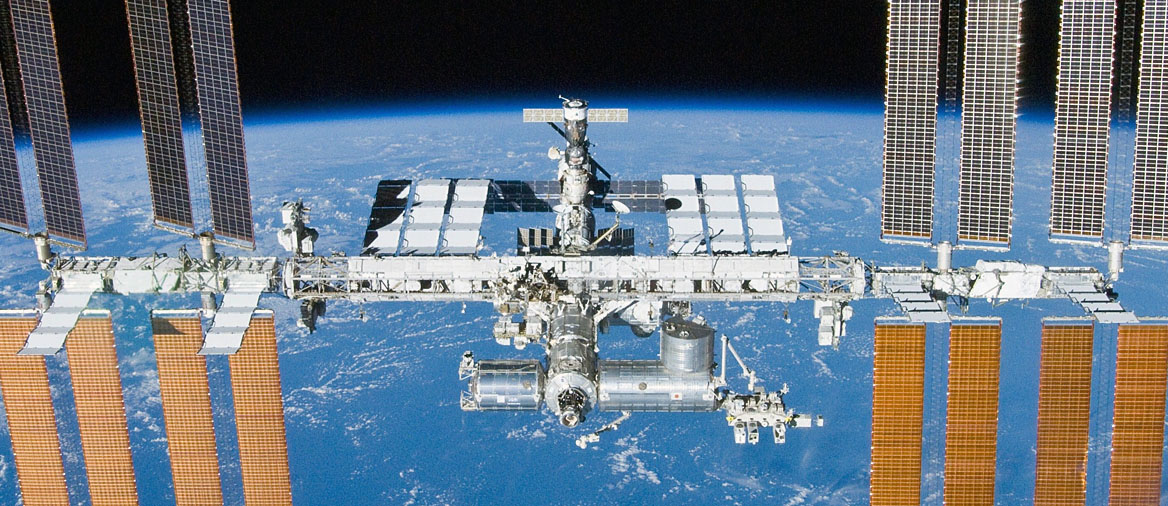The International Space Station (ISS) is a multinational space laboratory and habitable artificial satellite that orbits around Earth. Since its launch in 1998, the ISS has been a symbol of international cooperation in space exploration. But who exactly owns this remarkable feat of engineering and scientific collaboration?
The ISS is jointly owned by five space agencies: NASA, Roscosmos, JAXA, ESA, and CSA. NASA, the United States’ space agency, contributes the majority of funding and resources for the ISS program. The Russian space agency, Roscosmos, is the second-largest contributor and operates a segment of the space station called the Russian Orbital Segment.
The Japanese Aerospace Exploration Agency (JAXA), the European Space Agency (ESA), and the Canadian Space Agency (CSA) also contribute to the ISS program. JAXA provides technology and equipment for the Kibo laboratory, ESA contributes the Columbus laboratory, and CSA supplies the Canadarm robotic system.
The ownership and funding structure of the ISS allows for international collaboration and scientific research in microgravity environments. It is a testament to the power of cooperation and the shared goal of exploring space for the benefit of all humankind. In this article, we will delve deeper into the ownership and operation of the International Space Station.
History of the International Space Station
The International Space Station (ISS) represents a remarkable chapter in human space exploration, combining decades of scientific, technological, and diplomatic efforts. The history of the ISS dates back to the 1970s when both the United States and the Soviet Union separately envisioned the concept of a permanently manned space station. However, it wasn’t until the 1980s that the idea of an international collaboration began to take shape.
In 1984, U.S. President Ronald Reagan proposed the concept of a space station that would be a joint effort, leading to discussions with the Soviet Union. The breakthrough came in 1993 when NASA and the Russian Space Agency (Roscosmos) signed agreements to collaborate on the development of the space station.
The ISS project officially started in 1998 with the launch of the Russian module Zarya, which served as the foundation for the space station’s construction. Over the years, numerous modules and components were added, coordinated by NASA, to create an orbiting laboratory that could support scientific research and provide a platform for international cooperation.
In November 2000, the first crew arrived at the ISS, marking the beginning of continuous human presence on the space station. Since then, astronauts from various nations have conducted experiments, performed spacewalks, and pushed the boundaries of human endurance in the microgravity environment.
The history of the ISS showcases the power of international collaboration in space exploration, as multiple space agencies, including NASA, Roscosmos, JAXA, ESA, and CSA, have worked together to build and operate this incredible feat of engineering. In the next section, we will delve into the legal framework and ownership structure of the ISS, further highlighting the multinational nature of this space endeavor.
Legal Framework: Ownership of the ISS
The ownership of the International Space Station (ISS) is a complex matter that involves multiple space agencies and a unique legal framework. Given its international nature, the ownership and operation of the ISS are governed by a series of agreements and treaties.
The initial agreement, known as the Intergovernmental Agreement (IGA), was signed in 1998 by the space agencies involved in the project. This agreement established the framework for the ownership, operation, and utilization of the ISS. NASA, as the leading agency, coordinates the overall management and assembly of the space station.
The IGA sets forth the principle that the ISS is a multinational endeavor for peaceful purposes and that the partner agencies have designated certain elements of the space station as their respective contributions. NASA holds the largest share of the ownership, providing the majority of funding and resources. Roscosmos, the Russian space agency, is the second-largest contributor and operates a segment of the space station.
The ownership structure of the ISS allows for international collaboration and ensures that each partner agency maintains jurisdiction and control over its respective elements. This unique legal framework has enabled the successful operation of the ISS for more than two decades.
Commercial opportunities on the ISS
The International Space Station (ISS) not only serves as a platform for scientific research and international collaboration but also offers unique commercial opportunities in the realm of space exploration. With the growing interest in commercial space activities, the ISS has become an exciting destination for a variety of commercial ventures.
One notable area of commercial activity on the ISS is the provision of services such as transportation and logistics. Companies like SpaceX and Northrop Grumman have been contracted by NASA to resupply the space station, delivering essential cargo and experiments. These partnerships have paved the way for private space companies to play a significant role in supporting the operations of the ISS.
Moreover, the advent of commercial crew transportation has opened up opportunities for space tourism. Companies like SpaceX and Boeing are developing crewed spacecraft to transport astronauts to and from the ISS, but they also have plans to offer space tourism experiences for private individuals in the future.
Another avenue for commercial endeavors on the ISS lies in research and development. Private companies and research institutions can access the unique microgravity environment of the space station to conduct experiments and studies that can lead to impactful discoveries and innovations.
The commercial opportunities on the ISS highlight the expanding scope of space exploration and the potential for private enterprises to contribute to scientific progress and economic growth. As the ISS continues to evolve, it promises to be an exciting frontier for commercial space ventures.
The Future of the International Space Station
The future of the International Space Station (ISS) is both exciting and uncertain. The current plan is for the ISS to remain operational until at least 2024, with potential extensions possible. However, discussions are underway among the partner agencies to determine the fate of the space station beyond that timeframe.
One possible future for the ISS is a transition to commercialization. NASA has already expressed its intent to transition the space station to a commercial entity, allowing private companies to take on responsibility for its operation and maintenance. This could open up new possibilities for expanded commercial utilization and further advancements in space technology.
Another possibility is the deorbiting and controlled re-entry of the space station, where it would burn up in the Earth’s atmosphere. This would mark the end of an era for the ISS and make way for future space exploration endeavors, such as the Artemis program aiming to return humans to the Moon and the eventual goal of sending crewed missions to Mars.
Regardless of its ultimate fate, the ISS has undeniably left a significant legacy in human space exploration. It has served as a symbol of international cooperation and scientific progress, fostering groundbreaking research and technological advancements. As we look to the future, the lessons learned from the ISS will undoubtedly shape the next chapter of humanity’s journey into the cosmos.
Summary
- The International Space Station (ISS) is jointly owned by five space agencies: NASA, Roscosmos, JAXA, ESA, and CSA.
- NASA, the United States’ space agency, contributes the majority of funding and resources for the ISS program.
- Each partner agency maintains jurisdiction and control over their respective elements of the space station.







